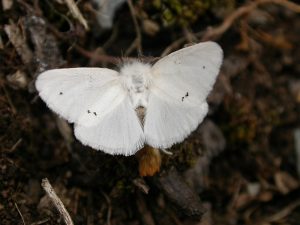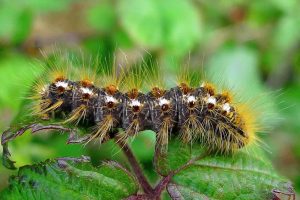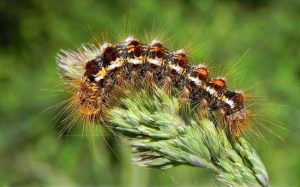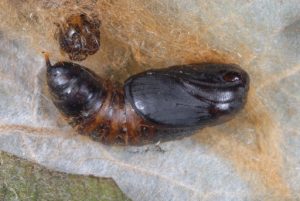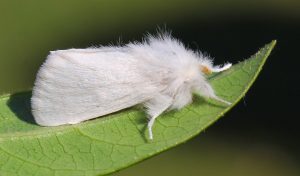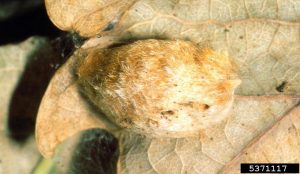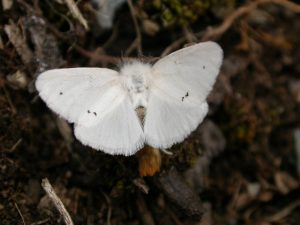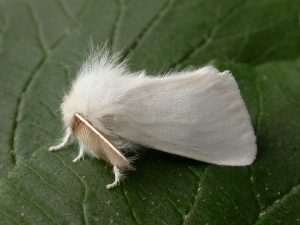Brown-tail Moth(Euproctis chrysorrhoea)
The brown-tail moth indigenous to Europe, Asia, and Africa’s northern coast belongs to the Erebidae family. In the United States, they were known to be introduced accidentally during the 1890s. Though its population spread to a larger part of America in the first half of the 20th century, a significant depletion in their numbers occurred in the latter half. The main reason is the appearance of a parasitic fly. However, their numbers have been on the rise since 2015 in the United States and Europe.
Description and Identification
Adult Moth
Sexual Dimorphism: Present
Color and Appearance: When the wings are opened, they appear hairy and white. The male moths often have patches of brown on the lower side of their forewing. The tail has a reddish-brown hairy appearance that seems more prominent in the female brown-tail species. When the wings are closed, they look entirely white, and the patches are not visible.
The females have a larger body but smaller antennae than males.
Average Wingspan: 3.6 – 4.7 cm
Flight Pattern: Not recorded
Season: July to August
Quick Facts
| Distribution | Native: England, Scotland, Wales, and different parts of Europe apart from the northern countries, parts of north Africa, western Asia (Syria, Turkey, Israel) Invasive: Parts of United States (from Connecticut to Maine) and Canada (towards New Brunswick) |
| Habitat | Coastal regions and forests |
| Predators | Parasitic fly and a kind of fungus mostly appearing during wet spring and destroying some of them |
| Lifespan of Adults | Approximately one month |
| Host Plants | Elm, beech, maple, pear, grape, oak, willow, raspberry, rose, cherry, beach plum, apple, hawthorn |
| Adult Diet | Nectar mostly of its host plants |
Did You Know
- The caterpillar’s hairs are known for its high levels of toxicity towards humans resulting in an itchy rash similar to poison ivy. It could even result in breathing problems when inhaled.
- The adult moths are nocturnal, strongly attracted to light.
- They closely resemble the yellow-tail and fall webworm native to Europe and North America in appearance.
Scientific Classification
- Family: Erebidae
- Genus: Euproctis
- Scientific Name: Euproctis chrysorrhoea

